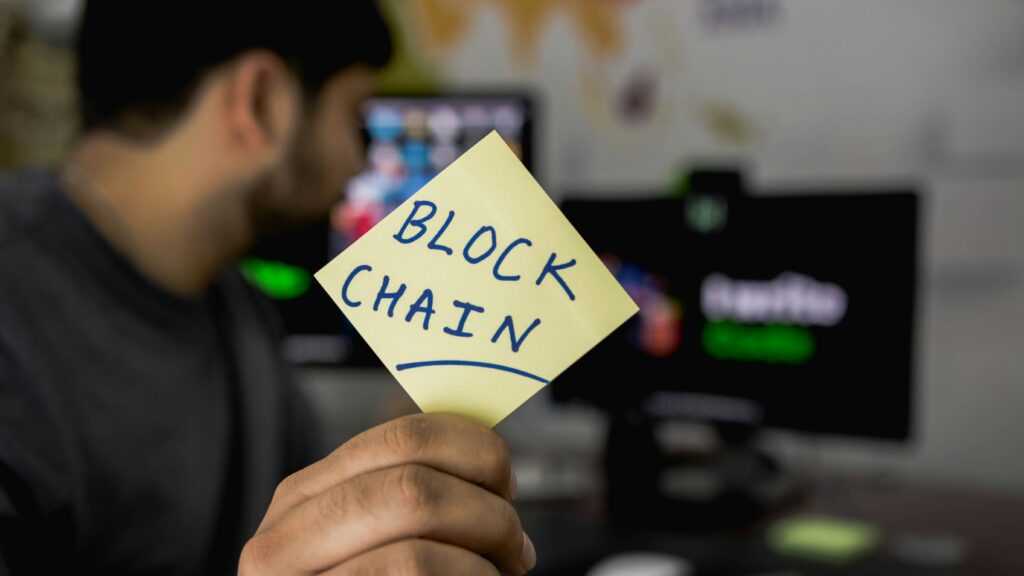Understanding Blockchain Technology
Blockchain technology uses a decentralized ledger to record transactions across multiple computers. Each transaction forms a ‘block,’ and these blocks link together in a ‘chain,’ hence the name blockchain. The structure ensures data remains tamper-proof because altering any block requires changes to all subsequent blocks.
Each node in the network has a copy of the entire blockchain. Nodes cooperate to validate new transactions through consensus mechanisms like:
- Proof of Work (PoW)
- Proof of Stake (PoS)
This consensus process ensures no single entity controls the data, enhancing security.
Cryptographic techniques secure the data within each block. Every block contains a cryptographic hash of the previous block, a timestamp, and transaction data. Hashing converts transaction details into a fixed-size string of characters, creating a unique digital fingerprint. If anyone tries to alter the transaction data, the hash changes and alerts the network to the tampering.
Transparency and immutability are core to blockchain’s security. All participants in the network can see the transactions, adding a layer of accountability. Once added, blocks can’t be modified. This immutability ensures that data remains accurate and trustworthy.
Smart contracts further enhance blockchain functionality. These are self-executing contracts with terms directly written into code. They automate processes and ensure all conditions meet predefined rules, reducing the risk of human error or fraud. Smart contracts execute only when specific conditions are met, ensuring transparency and trust in digital transactions.
Current Data Security Challenges
Data security faces myriad obstacles, despite advancements in technology. Let’s explore some pressing challenges and their impacts.
Data Breaches
Breaches remain a significant threat, affecting millions. For example, in 2021, data breaches exposed over 1.4 million records (source: Identity Theft Resource Center). Hackers gain access through phishing, malware, or exploiting software vulnerabilities. They steal sensitive information like Social Security numbers and credit card details, compromising privacy and financial security. Breaches often result in reputational damage and financial loss for companies.
Insider Threats
Insiders, including employees and contractors, can jeopardize security. Their access to critical data makes malicious actions easier. IBM’s Cost of a Data Breach Report highlights that insiders cause 23% of breaches. Motives include financial gain, espionage, or personal vendettas. Detecting and mitigating insider threats proves challenging, as perpetrators already possess legitimate access to systems.
Centralized Vulnerabilities
Centralized systems concentrate data in a single location, creating a focal point for attacks. If hackers breach central databases, they can access vast amounts of data. For instance, the 2017 Equifax breach compromised 147 million records due to centralized data storage weaknesses. In such systems, single points of failure increase risks, and downtime can severely disrupt operations.
By understanding these challenges, I can better appreciate blockchain’s potential in enhancing data security.
Blockchain’s Role in Data Security
Blockchain technology enhances data security in multiple ways. Its decentralized, encrypted, and immutable nature addresses several critical security challenges.
Decentralization
Blockchain decentralizes data storage, significantly reducing the risk of data breaches. By distributing data across many nodes in a network, it eliminates single points of failure commonly found in centralized systems. For instance, even if one node gets compromised, the integrity of the entire network remains unaffected, making unauthorized data access extremely difficult.
Encryption
Blockchain employs advanced encryption techniques to protect data. It encrypts each transaction and piece of data before storing it on the blockchain. This encryption ensures that even if data is intercepted, it remains unreadable without the appropriate cryptographic keys. For example, public-key cryptography is typically used, where a pair of cryptographic keys (public and private) secures the data, making it highly resistant to hacking attempts.
Immutability
Blockchain ensures data immutability through its unique consensus algorithms. Once data gets recorded, altering it becomes nearly impossible without collective agreement from the network. Any attempt to modify data requires changes across all distributed nodes, which is impractical. This immutability trait ensures data integrity and builds trust. For example, financial records stored on a blockchain can’t be tampered with, ensuring transparency and accuracy.
These three core aspects—decentralization, encryption, and immutability—demonstrate how blockchain technology is revolutionizing data security.
Real-world Applications
Blockchain’s impact on data security extends across various industries, reshaping how they handle and protect sensitive information.
Financial Sector
Blockchain enhances security for financial institutions by decentralizing transaction records. Banks, for example, use blockchain to prevent fraud through real-time verification of transactions. Cryptocurrencies like Bitcoin and Ethereum rely on blockchain to ensure secure, transparent transactions without intermediaries.
Healthcare Industry
In healthcare, blockchain secures patient data by encrypting and decentralizing medical records. Hospitals use blockchain to share patient information securely, reducing the risk of unauthorized access. Pharmaceutical companies track drug production and distribution with blockchain, ensuring the authenticity of medications.
Supply Chain Management
Blockchain improves supply chain transparency by tracking products from origin to delivery. Retailers, like Walmart, use blockchain to monitor the journey of goods, ensuring quality and authenticity. This technology also helps in verifying the legitimacy of products, reducing counterfeiting and fraud in the supply chain.
Potential Drawbacks and Considerations
Blockchain offers significant benefits for data security, but it isn’t without potential drawbacks and considerations.
Scalability Issues
Blockchain networks can struggle with scalability. As more data gets added, the size of the blockchain grows, making it harder to manage and slower to process transactions. For example, Bitcoin’s blockchain has grown to over 350 GB, which can strain network resources.
Energy Consumption
Blockchain mining processes consume substantial energy. For instance, the Bitcoin network’s annual energy consumption rivals that of some small countries. This high consumption raises environmental and sustainability concerns.
Complexity and Cost
Implementing blockchain solutions can be complex and costly. Businesses may face barriers to entry due to the need for specialized knowledge and significant investment. Training staff to manage blockchain systems adds to these costs.
Regulatory Challenges
Regulatory landscapes for blockchain technology remain uncertain. Governments worldwide, like the United States and the European Union, have varying stances on blockchain usage. This regulatory uncertainty can pose risks for businesses adopting blockchain.
Data Privacy Concerns
While blockchain enhances security, it can also create data privacy challenges. Data on a blockchain is immutable, so removing personal data to comply with regulations like GDPR is difficult. This immutability could clash with privacy laws in some jurisdictions.
Interoperability Issues
Different blockchain platforms may lack interoperability, making data exchange between blockchains complicated. Organizations using multiple blockchain systems might face integration challenges, which can hinder smooth operations.
Speed of Transactions
Some blockchain networks suffer from slow transaction speeds. Bitcoin, for example, processes around 7 transactions per second, much lower than Visa’s 24,000 transactions per second. This slow speed can hinder blockchain’s scalability and efficiency.
Despite these drawbacks, it’s clear that blockchain technology has a profound impact on enhancing data security. However, careful consideration and planning are necessary to address these potential issues effectively.
Future Prospects of Blockchain in Data Security

Blockchain technology offers several avenues for enhancing data security in the future. It provides solutions for securing sensitive data, streamlining operations, and ensuring transparency.
- Decentralized Identity Management
Implementing decentralized identity management systems can improve security. By eliminating central points of attack, blockchain-based identity systems offer a robust method for securing personal and organizational identities. Solutions like these reduce the risk of data breaches, identity theft, and unauthorized access.
- Secure Voting Systems
Blockchain can secure voting systems by providing a transparent and immutable ledger of votes. Voter fraud reduces significantly when each vote is encrypted and recorded on a blockchain. Some countries and organizations are already piloting blockchain-based voting systems with promising results.
- Data Provenance and Integrity
Blockchain ensures the integrity of data through its immutable ledger. Tracking data origins and confirming authenticity becomes seamless with blockchain. This is crucial in supply chain management and healthcare, where verifying data sources impacts operations and safety.
- Enhanced IoT Security
As the Internet of Things (IoT) grows, securing communication between devices becomes critical. Blockchain offers a decentralized and secure way to manage the vast data generated by IoT devices, preventing unauthorized access and manipulation.
- Smart Contracts
Smart contracts automate and enforce agreements without intermediaries. These self-executing contracts, encoded on the blockchain, ensure data remains secure and inaccessible to unauthorized parties. They hold potential in various fields—from finance to legal industries—by reducing fraud and enforcing compliance.
- Healthcare Data Security
Storing healthcare data on a blockchain ensures its security and privacy. Patients, healthcare providers, and insurers can exchange information securely and transparently, improving care quality and reducing fraud.
- Integration with AI and Machine Learning
Combining blockchain with AI and machine learning can create more secure systems. AI algorithms can monitor blockchain transactions in real-time, identifying and mitigating threats swiftly. This integration promises to enhance the overall security framework.
- Regulatory Compliance
Blockchain can simplify regulatory compliance by providing transparent and tamper-proof records. Industries like finance and healthcare can use blockchain to meet stringent regulatory requirements without compromising data security.
Blockchain’s future in data security looks promising as it continues to evolve and integrate with other technologies. Its potential to transform industries, secure data, and enhance transparency makes it a vital tool in the digital age.


 Founder & CEO
Daniel Anderson is the visionary founder and CEO of the website, leading the charge in revolutionizing the crypto space. With a deep understanding of blockchain technology and years of experience in the industry, Daniel has established himself as a key figure in the cryptocurrency world. His passion for decentralization and financial innovation drives the platform’s mission to deliver cutting-edge insights and resources for crypto enthusiasts, traders, and investors. Under his leadership, the website has grown into a trusted hub for the latest trends, news, and developments in the digital asset space.
Founder & CEO
Daniel Anderson is the visionary founder and CEO of the website, leading the charge in revolutionizing the crypto space. With a deep understanding of blockchain technology and years of experience in the industry, Daniel has established himself as a key figure in the cryptocurrency world. His passion for decentralization and financial innovation drives the platform’s mission to deliver cutting-edge insights and resources for crypto enthusiasts, traders, and investors. Under his leadership, the website has grown into a trusted hub for the latest trends, news, and developments in the digital asset space.
